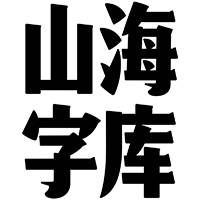Macula, The Impossible Typeface

Once in a while you come across a typeface that astounds you by the bold new direction it takes. The recent Tobias Sommer a.k.a. Shasta created the Esher-inspired Esheresk. And now Macula gives us an exuberant interpretation. I wanted to know more about its genesis and interviewed Jacques Le Bailly.


Early quick sketches researching impossible letter forms.
Where did you get the idea to create a typeface design with an "impossible perspective"?
Jacques Le Bailly | "Like so many designers I have always been fascinated by the works of M.C. Escher, Reutersvärd and others. Whenever I am working on a job for a long stretch of time I am concerned about being focused too much on one single thing. To avoid this I sometimes make small unrelated drawings and sketches to steer my creativity into a completely different direction. During one of these moments I began playing with the Penrose triangle and other optically impossible shapes. At some point I wondered if this could be applied to letter forms. So it really all originated as some kind of playful research on shapes."

First attempt at creating impossible letter forms based on a rounded rectangle.
How did you approach the actual design of the typeface?
Jacques Le Bailly | "I initially looked at a lot of work by optical artists. There is a multitude of ways to trick the eye. The shapes I created at the beginning were very methodic; they displayed a lot of repetition. This was because of the basic construction I chose, a rounded rectangle. I considered this a flaw, because I wanted to exploit an optical effect, not merely use a gimmick."
"To get away from this I based the letter forms on sans serif, grotesque shapes. This quickly made the characters more diverse. I tried a couple of different text settings with this. Because this iteration still had the same proportions as the first sketches the text looked really forced."

Moving the design away from the rounded rectangle, towards sans serif, grotesque shapes.
"When I eventually decided to base the letter proportions on geometric shapes – circle, triangle and square – the whole concept started falling into place. This also allowed me to create a type design with far more natural proportions, away from the optical effect, similar to the proportions found in Standard/Basic Commercial or Franklin Gothic.

Basing the type design on simple geometric shapes: circle, triangle and square.
Once your design system had been established, how hard was it to develop the individual glyphs?
Jacques Le Bailly | "Some letters were easy to construct, others were far more complex. Often the simple letters were the most difficult, because they offered very few possibilities or starting points. I wanted to avoid designing artificial shapes as much as possible. To keep the typeface lively every single character, down to the punctuation and floating accents, needed to have two versions, as if looked at from two different viewpoints. Sometimes the first version came together very quickly, and then it took an eternity to find a good second one. Another important factor was that I wanted to create an actual functioning typeface, not just a collection of glyphs that look good together. So it was possible that certain shapes looked nice but didn't fit within the typeface."

Testing different kinds of shading.
Were there any specific characters whose design was particularly challenging?
Jacques Le Bailly | "When designing a typeface you can opt for complete uniformity. Due to their intended use display faces offer the possibility to play around with this. I have given characters like the ampersand, the commercial @ and a few others some extra attention, to have them really jump out and make them different."
"At a certain point I really got into the groove and all characters started to come along very nicely. That is, until I decided to add a shaded version to the typeface. The look and feel of the shading is roughly inspired by the copper and wood engravings from the end of the 19th century. The proportions of the characters are also comparable to the letters from around that period, so it seemed appropriate to me. The creation of the shaded version started out like a fun idea, but ended being a hell of a lot of work. The shapes of the characters were so inconsistent that this shading could not be generated automatically. Eventually the solution became an interplay between Illustrator and Fontlab."

Fine-tuning the shading of the characters.
Macula, the typeface's name, has a really good ring to it. Where did you get it from?
Jacques Le Bailly | "The macula is an actual part of the anatomy of our eye which plays an important role in human vision. This oval-shaped highly pigmented yellow spot near the center of the retina of the human eye contains the largest concentration of cone cells in the eye and is responsible for central, high resolution vision. The name of the typeface is oddly related to myself. I have a defect in my right eye that prevents me from seeing with the yellow spot, which means I can't read with my right eye."

Freeform composition by Jacques Le Bailly.
Ever since Jacques started dropping hints on his Facebook page I have been eagerly anticipating this seemingly insane design. Now that I have witnessed it in its full mind-bending glory I am very happy to say that it does not disappoint. In fact I like it so much that I reviewed it for Typographica's Our Favourite Typefaces of 2012, to be published soon. Which means I won't ruin the surprise by writing any more about it now. So, terribly sorry, but you will have to have a little patience.

Freeform composition by Jacques Le Bailly.
-
 ShanhaiFonts
ShanhaiFonts
Brand:山海字库
Area:China

-
 Cangji Fonts
Cangji Fonts
Brand: 仓迹字库
Area: China

-
 JT Foundry
JT Foundry
Brand: 翰字铸造
Area: Taiwan, China

-
 Handmadefont
Handmadefont
Brand:
Area: Estonia

-
·千图字体
-
 HyFont Studio
HyFont Studio
Brand: 新美字库
Area: China

- ·Brother Moto Flat-Trackin' Tee
- ·Cocoa Marsh Instant Fudge Candy Mix packaging
- ·Troubadour poster, Opera Plovdiv
- ·Bevésett nevek (Carved Names), vol. 2
- ·Once Upon DESIGN: New Routes for Arabian Heritage
- ·XUID Arrays: One Less Thing To Worry About
- ·How to Read a Painting by Patrick de Rynck
- ·Benetton identity redesign
- ·London Underground's iconic Johnston Sans typeface
- ·Königsblut identity























